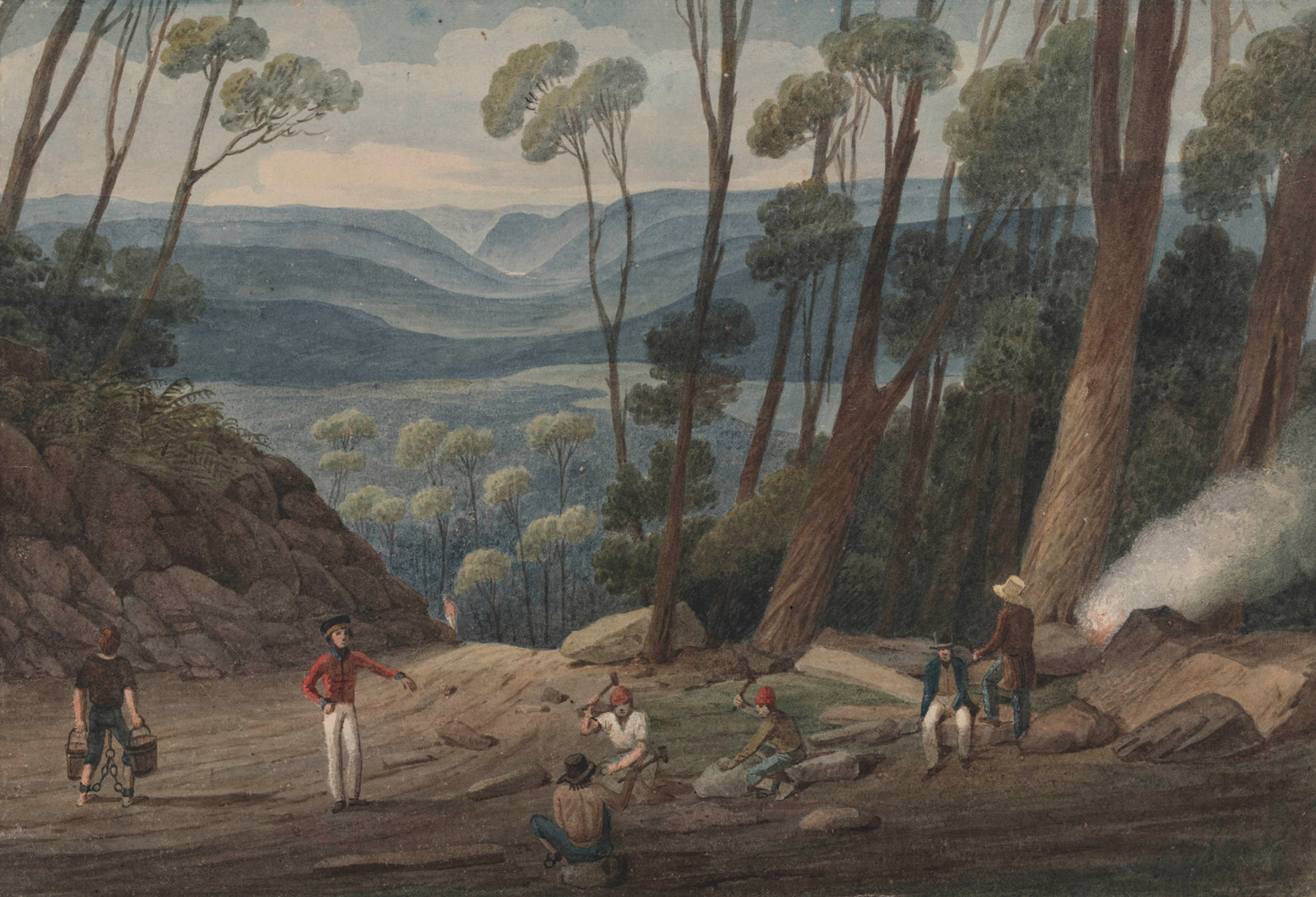Norfolk Island
Kingston & Arthur’s Vale Historic Area (KAVHA) (1788–1814 & 1824–55)
This site is on Norfolk Island, which served as an outposted penal station of New South Wales (NSW) over two periods, the second as a place of punishment for reoffending convicts.
Some female convicts were sent there in its earlier years but the overwhelming number of convicts were male. KAVHA comprises more than 40 buildings, groups of buildings, substantial ruins and archaeological remains set within 225 hectares of relatively undisturbed land.
All structures were constructed by convicts from limestone quarried on the island or with local timber. The site encompasses an exceptional landscape that has survived largely unchanged since the convict era. KAVHA demonstrates the use of penal transportation to expand Britain’s geopolitical spheres of influence, punish criminals, deter crime in Britain and rehabilitate criminals. The site is also associated with global developments in the punishment of crime during the 19th century, including Commandant Maconochie’s ‘mark system’.
The layout of the site reflects the strategic spatial placement of buildings that separated colonial authorities from convicts. This demonstrated both the real and symbolic power of authorities to scrutinise and control the convict population. A complex of military and administrative buildings is elevated on the rise along Quality Row. These include military compounds, offices and cottages for civil and military personnel and a Commissariat Store. There is a clear view from these buildings down to the convict precinct on the foreshore. The pre-1850s Georgian-style buildings (some partly reconstructed) survive in a streetscape setting. The Old Military Barracks includes barracks, officers’ quarters, a privy and a guardroom surrounded by a compound perimeter wall with observation towers. The larger New Military Barracks, built to accommodate the increasing number of soldiers, also includes barracks, officers’ quarters and the archaeological remains of the military hospital. Government House is strategically located with a commanding view over both the military/administrative complex and the convict precinct. It was the residence for commandants during the convict period and has been restored to its 1830s condition.
The convict precinct lies along the sea front which was under the eye of the authorities on the hill. It comprises two Prisoner Compounds and industrial structures (including ruins and archaeological sites) where convicts were accommodated, worked, incarcerated and sometimes executed. One compound includes the Protestant Chapel and footings of the Prisoners’ Barracks, Sentry Post, Guard Houses and the Roman Catholic Chapel enclosed by a perimeter wall with a gate archway. Adjacent to this is the second compound, comprising the New Gaol surrounded by a perimeter wall. The platform, layout and ruins of the five pentagonal wings remain. A group of structures on the foreshore was where most of the industrial activities were undertaken by convicts to produce goods required by the penal colony. Key buildings include the Landing Pier, Pier Store, Royal Engineer’s Office and Stables, Settlement Guard House, Police Office, Constable’s Quarters, Crankmill, Blacksmiths’ Compound, Double Boatshed, the Salt House, Lime Kilns and the archaeological site of the Lumber Yard, Mess Yard and Quarries. There are also extensive convict-built roads, water channels and bridges, and nine underground silos to store grain for the colony. A cemetery for convicts and free people includes many graves and headstones of convicts. Arthur’s Vale is an extensive valley which was largely used for gardening and agriculture by convicts. It retains the convict dam and vestiges of agricultural buildings, barns, small cottages, gardens and cropping patterns from the convict era. Today the site operates as a historic, administrative and recreational site with several museums and government buildings.
Read more about Norfolk Island and the other Australian Convict Sites that are inscribed on the World Heritage List.

Convict Sydney
Back to business
From 1822, with the British government keen to cut costs and encourage pastoral expansion, part three sees the removal of convicts from town

Convict Sydney
A world of pain
The combined aims of the assignment system, from 1826 onwards, were to equip farmers with cheap convict labour, to disperse convicts away from towns (and other convicts) and to keep an eye on each worker’s whereabouts and treatment
Published on
